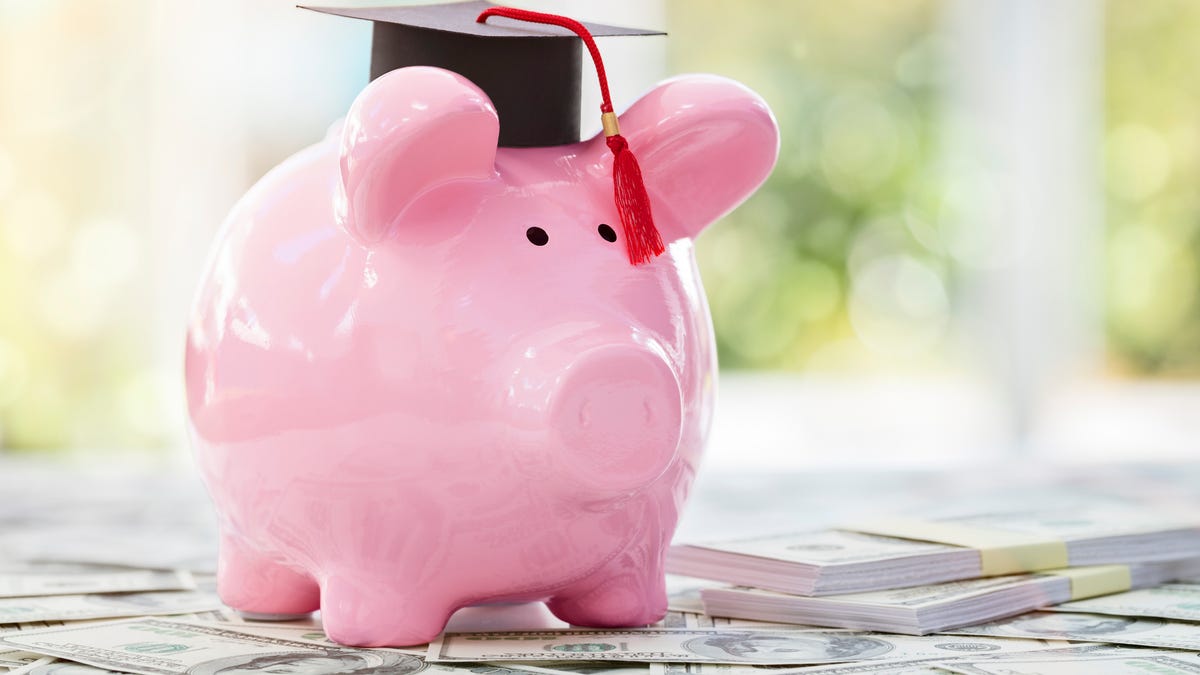Control Your Student Loan Debt: How to Make the Most of the Extended Payment Pause
Use the final months of the student loan payment pause to optimize your debt before you start making payments again.

Student loan payments are currently paused until the start of 2023.
President Joe Biden has once again extended the pause on federal student loan payments and interest, this time until Dec. 31, 2022. Payments will now resume on Jan. 1, 2023, and Biden has indicated that there will be no further extensions of the payment moratorium.
However, there are some benefits to continuing to make payments during the pause. To do that, you'll need to set up repayment online or contact your federal student loan provider. It's important to remember that during the payment pause, former student loan servicing giant Navient transferred all of its student loans to Aidvantage.
Whether you continue to make student loan payments during the freeze or start back up in the new year, there are many ways to simplify the process of paying student loans, as well as save yourself time and money along the way. Here are five tips to make repaying your student loans easier and to help get out of debt sooner.
For more on student loans, learn everything about Biden's student loan forgiveness plan and who's received the additional $32 billion in student loan cancellations during Biden's term.
1. Refinance student loans to get lower interest rates
One of the best ways to optimize your student loan debt repayment is by refinancing your private (and sometimes even federal) student loans. This can help you:
- Lock in a lower interest rate
- Consolidate your balances
- Simplify repayment into one account
- Adjust your monthly payment to fit your budget
Refinancing is especially helpful if your credit has improved since taking out the loan, and can also be used to release a cosigner from your educational debt. No student loan refinancer is perfect for every borrower, though, so it's important to evaluate affordability, borrower eligibility criteria and customer service while researching refinancers.
You can refinance all of your loans or just select balances. It's important to note, however, that if you're refinancing federal student loan debt into a private refinanced loan, you may lose out on certain benefits, including forbearance or deferment, income-based repayment and applicable student loan forgiveness opportunities.
2. Pay extra to eliminate your debt faster
Whether it's an extra $20 a month or one additional payment each year, paying down your student loans at a faster rate than scheduled can help you save on interest and get out of debt sooner. Whenever you have room in your budget, making extra payments can make a dent in your student loan balance -- though you should always pay down higher-interest debt first, like credit cards and personal loans.
Most lenders will allow you to make principal-only contributions in addition to your scheduled monthly payment. The faster you reduce your principal balance, the less you'll pay in interest over the course of the loan -- and the sooner you can eliminate the debt altogether.
3. Enroll in an autopay program to 'set it and forget it'
Setting up an automated payment system can simplify your monthly student loan payments. There's less risk of making a late payment -- which could result in fees and hurt your credit score -- and it's one less thing to worry about.
Plus, it could also save you money. Many lenders offer discounts in exchange for setting up automatic payments on your loan. These autopay discounts are generally around 0.25%, which can add up over time.
4. Consider income-driven repayment (IDR) plans
Depending on the type of loan and what you can afford each month, you may want to consider the different repayment plan options available to you.
Certain federal student loans borrowers may be eligible for income-driven repayment (IDR) plans. There are four of these to choose from:
- REPAYE (revised pay as you earn) plan
- PAYE (pay as you earn) plan
- IBR (income-based repayment) plan
- ICR (income-contingent repayment) plan
While a standard repayment plan is often the best choice to pay off your loans as quickly as possible, these income-based options can help make monthly payments more affordable for borrowers who can only afford a smaller payment each month. Eligibility for IDR plans is based on family size and discretionary income (income after taxes and necessities such as housing, food, utilities and transportation).
Enrolling in one of these programs now, before student loan payments become due again in January, can help make sure you're able to afford your monthly student loan payment.
5. See if you qualify for additional student loan forgiveness
While Biden's student loan debt forgiveness plan includes $10,000 to $20,000 for all borrowers who earn less than $125,000 a year, the Department of Education has discharged $32 billion in student loans for public servants, people with disabilities and victims of fraudulent colleges since Biden took office in January of 2021.
Usually, student loan forgiveness is offered to federal loan borrowers who work as qualifying public servants, like teachers, government employees and nonprofit workers. Other loan forgiveness can result from unique circumstances, such as the COVID-19 pandemic, or as a result of government policy, such as the $5.8 billion discharged for borrowers with permanent disabilities in August 2021.
Loans can also be discharged or canceled for other reasons; if your school closes before or shortly after you graduate, if you or a parent borrower passes away, or (in some cases) after declaring bankruptcy. Other borrowers may take advantage of established programs that may forgive, cancel or discharge their debt. It's important to remember, of course, that you'll still need to make on-time payments on the loan(s) until you qualify for forgiveness.

